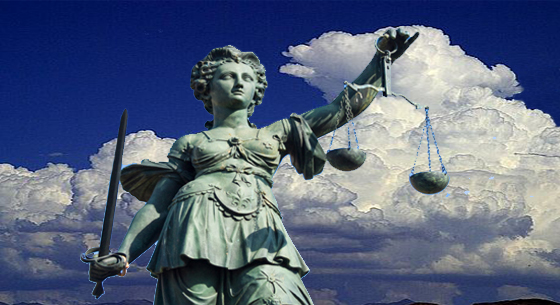The right to
a trial before an impartial judge is of fundamental importance to our system of
justice. Should it be concluded by an appellate court that the words or actions
of a trial judge have exhibited bias or demonstrated a reasonable apprehension of
bias then a basic right has been breached and the exhibited bias renders the
trial unfair. Generally, the decision reached and the orders made in the
course of a trial that is found by a court of appeal to be unfair as a result
of bias are void and unenforceable.
Please see the following regarding Reasonable
apprehension of Bias and the subject of a recusal of Judge in F.Y. v. R., 2011
NBCA 86 (CanLII), <http://canlii.ca/t/fn8m7>
[6]
The rejection of the anticipated
submission on sentencing before it is made demonstrates two errors of
principle: violation of the right to be heard and violation of the right to an
unbiased decision-maker. The failure of the Provincial Court judge to hear the
appellant before pronouncing upon a request for a conditional sentence is
self-evident. Unfortunately, the subsequent exchange between the judge
and the appellant, which is partly set out in paragraph 12 below, not only
failed to remedy the first violation but constitutes proof of the second.
[7]
With respect to bias, I would
note that it can come in many forms. It need not be demonstrated against
an individual because of his or her personal attributes, circumstance in life
or previous interactions between the judge and the accused. A judge can
demonstrate actual bias or create a reasonable apprehension of bias because of
his or her personal beliefs on the issue to be determined. In Newfoundland
Telephone Company v. Newfoundland (Board of Commissioners of Public Utilities),
1992 CanLII 84 (SCC), [1992] 1 S.C.R. 623, [1992] S.C.J. No. 21
(QL), the appellant contended one of the board members was biased with respect
to a rate hearing application. The board member made statements, while the
hearing was in progress, about the very subject matter he was being called upon
to address. For example, he said there was “no justification whatsoever to
expect the consumers of telephone services […] to be paying the full cost of salary
levels” and “[…] there is a significant level of overcompensation […]”.
Cory J., delivering the judgment of the Court, stated:
These
statements, taken together, give a clear indication that not only was there a
reasonable apprehension of bias but that Mr. Wells had demonstrated that he had
a closed mind on the subject. [para. 38]
[8]
I am of the view the Provincial Court
judge demonstrated a closed mind on the subject of a conditional sentence
before having heard from the appellant. He thereby demonstrated actual bias
against the interests of the appellant.
[9]
In the event the Provincial Court
judge’s conduct did not demonstrate actual bias, I am of the view it, at a minimum,
demonstrated a reasonable apprehension of bias. In R. v. Curragh Inc.,
1997 CanLII 381 (SCC), [1997] 1 S.C.R. 537, [1997] S.C.J. No. 33
(QL), the trial judge in a manslaughter case, which flowed from the death of 26
miners in Nova Scotia, made a phone call to the Acting Director of Public
Prosecutions to express his displeasure with the conduct of the Crown
prosecutor. During that conversation, the trial judge requested the
removal of the prosecutor. In the event the Acting Director failed to act
on the recommendation for removal, the trial judge threatened to take steps “to
secure that end”. The Crown brought a motion for recusal, which was denied. Thereafter, the trial judge
imposed a stay of proceedings. The Nova Scotia Court of Appeal ordered a new
trial. The Supreme Court dismissed the appeal. In delivering the majority
judgment, La Forest and Cory JJ. stated:
The right to a
trial before an impartial judge is of fundamental importance to our system of
justice. Should it be concluded by an appellate court that the words or actions
of a trial judge have exhibited bias or demonstrated a reasonable apprehension
of bias then a basic right has been breached and the exhibited bias renders the
trial unfair. Generally, the decision reached and the orders made in the
course of a trial that is found by a court of appeal to be unfair as a result
of bias are void and unenforceable.
[…]
[…] when a
court of appeal determines that the trial judge was biased or demonstrated a
reasonable apprehension of bias, that finding retroactively renders all the
decisions and orders made during the trial void and without effect.
[paras.
7-8]
[10]
The test to be applied in determining whether a
decision-maker’s conduct or words demonstrate a reasonable apprehension of bias
is whether an informed person, viewing the matter realistically and
practically, and having thought the matter through, would conclude that
consciously or unconsciously, the decision-maker would be motivated by a bias: Committee
for Justice and Liberty v. National Energy Board, 1976 CanLII 2 (SCC), [1978] 1 S.C.R. 369, [1976] S.C.J. No. 118
(QL) at 394. In deciding a motion for his recusal in Arsenault-Cameron v. Prince Edward Island,
1999 CanLII 641 (SCC), [1999] 3 S.C.R. 851, [1999] S.C.J. No. 75
(QL), Bastarache J. opined that in an application for recusal
based upon bias or reasonable apprehension of bias, the applicant must
demonstrate wrongful or inappropriate declarations showing a state of mind that
“sways judgment” (para. 5). I am satisfied that the Provincial Court
judge’s opinions regarding conditional sentences as expressed by him to the
Crown prosecutor, his rejection of a conditional sentence before having heard
from the appellant and his manner of questioning the appellant all demonstrate
a reasonable apprehension of bias, if not actual bias, regarding the very issue
raised by the appellant – whether a conditional sentence would be appropriate
in the circumstances.





















No comments:
Post a Comment